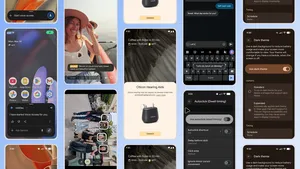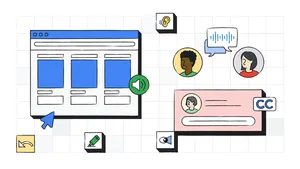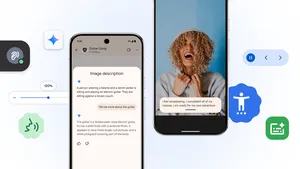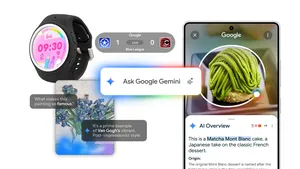Preserving endangered languages with Noto fonts

Minority or endangered languages are facing a crisis. According to UNESCO, at least 43% of the estimated 6000 languages spoken in the world are endangered. Even though my grandparents spoke an endangered language and language preservation has been my passion for many years, I only recently understood that fonts—the symbols that appear when you type on a keyboard—play a key role in enabling minority language speakers to digitize and preserve their languages on the internet and in print. Until now, many minority languages lacked fonts.
From billions of readers to very small language communities, the freely available, open source Noto font family from Google Fonts supports literacy for hundreds of languages. The Cherokee Nation, with an estimated 20,000 speakers, uses Noto on phones for texting, email and teaching their language in the USA. Noto is used every day for Tibetan, millions of African users, and hundreds of languages of Asia. The government of British Columbia in Canada, with a population of 5 million people, wanted to cover all their languages, including indigenous ones, in a single font and merged Noto Sans + Noto Sans Canadian Aboriginal into a single font, BC Sans font.
This text is in the indigenous language of Cree in the BC Sans text (in Cree, transliterated in Latin, and in English). (Text source: Government of British Columbia, Canada)
This text is in Noto Sans Adlam. Adlam is one of the scripts used in the Sahel and West Africa.
This text is in Noto Sans Sorang Sompeng, a script used in India to write in Sora, a Munda language used by around 300,000 people.
The Noto name comes from the mission, “NO TOfu”—eliminating the tofu-like boxes () that appear when no font is available for a user’s text. Noto offers fonts for 146 scripts (writing systems) and over 800 languages, and is opening the door to reading and writing for minority language speakers. Noto is the largest source of fonts for endangered languages. Aligned with Google.org’s support of the Endangered Languages Project and Google’s private sponsorship of UNESCO’s International Conference Language Technologies for All, the Noto project is Google’s ambitious Unicode font project, aiming to continually support 100% of all Unicode characters each year with fully functional fonts. Noto won the Beazley Design Museum Designs of the Year award in 2017.
Noto, which has been in development since 2012, recently updated its page on GitHub. The new home at github.com/notofonts has one git project per script, with all sources either available in the widely supported Unified Font Object (UFO) font source or using the .glyphs format. We also have a new on-demand build system triggered as soon as someone updates a font source that uses the Google Fonts open source ‘fontmake’ compiler. This means Noto fonts are now more truly open source, will be better documented and available for contributions by many more people.
Digitizing endangered languages
A font and a keyboard to type it are critical needs for languages in the digital era, but the most important thing is Unicode support.
Type design is the discipline of creating physical or digital typefaces, the coherent collections of letterforms that today are more commonly referred to as fonts, which are the digital representations of type. With fonts, communities can digitize written documents, publish cultural and religious texts online, or teach their children with digital media. This digitization process saves knowledge, and enables connections and communication across generations. It allows people to keep connected with their villages and family, even if they are physically far away. People in an urban diaspora can keep in touch with other urbanites in the same language community, by using the font to produce printed material for posters, educational material, books, newsletters, and so on. Younger generations of language learners can use Noto fonts to learn to read and write in endangered tongues, text and write emails to each other and communicate via social media.
Ultimately, typefaces are a kind of "critical infrastructure" for each culture, a medium to store and transmit emotional tone.
Accessibility
The ability to read minority languages digitally via text magnification improves the accessibility of both historical and modern content in these languages. Languages and their scripts are important to me because I am multilingual and an endangered language activist. While I was preparing the documentary film, Saved by Language, about a boy who saved his life in the Holocaust by speaking the endangered language of Ladino/Judeo-Spanish and my TedX talk on preserving endangered languages with music, I had to read through many old printed materials from a century ago. Since I am partially blind, it was difficult to read the small text with dense typography on discolored paper. If these documents had been digitized and users could easily use zoom mode to read on a computer or device, they would be more accessible and useful to everyone. Unicode fonts, such as Noto, resolve the problems that previously existed when minority language communities had to publish images of text without Unicode encodings. These images were not readable by screen readers and would often be hard to read when enlarged.For some communities, the Noto font for their writing system may be the only way to use their language digitally because there are no other fonts available for their scripts. I encourage you to learn about which Noto fonts are available for the languages you care about.






